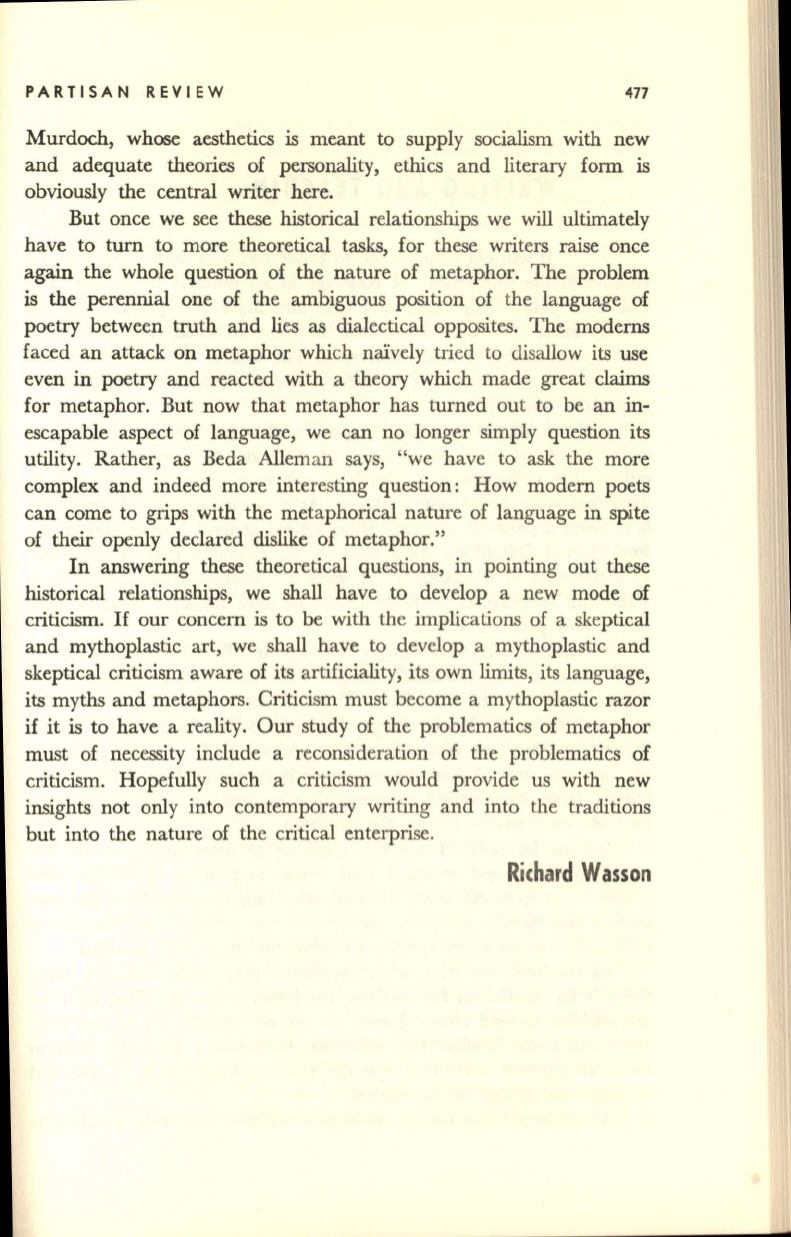
PARTISAN REVIEW
477
Murdoch, whose aesthetics is meant to supply socialism with new
and adequate theories of personality, ethics and literary form is
obviously the central writer here.
But once we see these historical relationships we
will
ultimately
have to turn to more theoretical tasks, for these writers raise once
again the whole question of the nature of metaphor. The problem
is the perennial one of the ambiguous position of the language of
poetry
between truth and lies as dialectical opposites. The moderns
faced an attack on metaphor which naively tried to disallow its use
even in poetry and reacted with a theory which made great claims
for metaphor. But now that metaphor has turned out to be an in–
escapable aspect of language, we can no longer simply question its
utility. Rather, as Beda Alleman says, "we have to ask the more
complex and indeed more interesting question: How modern poets
can come to grips with the metaphorical nature of language in spite
of their openly declared dislike of metaphor."
In answering these theoretical questions, in pointing out these
historical relationships, we shall have to develop a new mode of
criticism.
If
our concern is to
be
with the implications of a skeptical
and mythoplastic art, we shall have to develop a mythoplastic and
skeptical criticism aware of its artificiality, its own limits, its language,
its myths and metaphors. Criticism must become a mythoplastic razor
if it is to have a reality. Our study of the problematics of metaphor
must of necessity include a reconsideration of the problematics of
criticism. Hopefully such a criticism would provide us with new
insights not only into contemporary writing and into the traditions
but into the nature of the critical enterprise.
Richard Wasson


